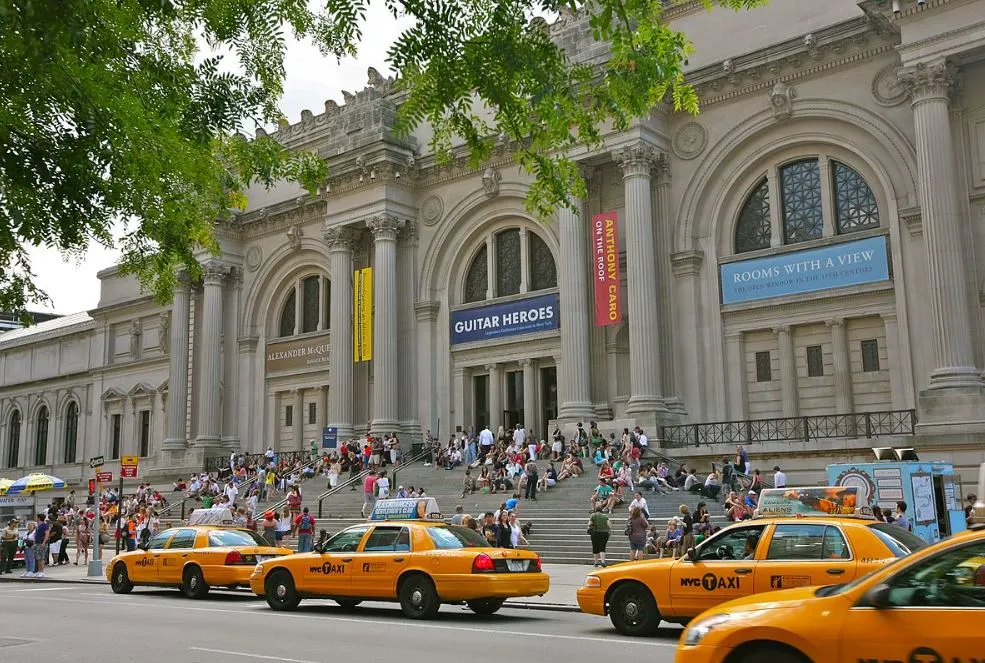Very few painters in history have captured the essence of the mighty ocean’s force like Winslow Homer (1836-1910) did.
He completed one of his most revered paintings in the final year of the 19th century and it depicts a topic he had been interested in for a very long time.
This mesmerizing work features a combination of elements he had used before and this turned it into an incredibly captivating work of art.
In this article, we’ll take a closer look at some of the most interesting facts about The Gulf Stream, a magnificent painting by Winslow Homer.

1. Winslow Homer painted the Gulf Stream in the final part of his career
Winslow Homer can easily be described as one of the most renowned American artists of the 19th century.
The Realism painter started his career as an illustrator of magazines but found his calling when he switched to oil painting in the early 1860s.
He started his painting career by drawing soldiers at the front during the American Civil War and although he earned little acclaim at the time, it marked his transition to oil painting.
His early paintings are defined by a sense of optimism following the end of this tragic event in American history.
This gradually changed as he lost this optimism due to the fast-paced urbanization of the countryside that he loved so much.

He completed the Gulf Stream in 1899, near the turn of the century which marked the final decade of the artist’s life.

2. He became inspired to paint this work during his Caribbean holidays
The American painter was a prolific traveler and was often inspired by what he saw on his many journeys.
One of his most favorite spots to visit was Key West, Florida. This was a place where he presumably worked on several of his later works, including The Gulf Stream.
From here, he often embarked on voyages throughout the Caribbean (his first visit in 1885), including to Cuba and the Bahamas.
It’s during his trip to Nassau that he came across a story of a man who was swallowed completely by a huge shark.
This notion in combination with his fascination for the subject of “man against nature” resulted in The Gulf Stream.
As you can see in the image below, it depicts a helpless man on a small demasted boat struggling against the wild ocean while being surrounded by bloodthirsty sharks.

3. He painted several studies that preceded the final work by many years
During his first trip to the Caribean in 1885 he read a story in a local newspaper about a man being devoured by sharks.
He instantly started working on a watercolor that depicts several sharks surrounding a very similar demasted boat as the one appearing in his 1899 masterpiece.
The boat is empty, something that makes the viewer assume that the sharks have just had a great meal.
This particular watercolor is referred to as “Sharks, The Derelict” and was completed in 1885.

Homer continued working on the subject and painted several more studies before he started working on his final painting.
The most notable example is a watercolor that he completed in 1898 titled “Study for The Gulfstream.”
It depicts a detailed view of the demasted boat on which the man lies. Just a year later, he completed The Gulf Stream, a combination of all the studies he had done earlier.
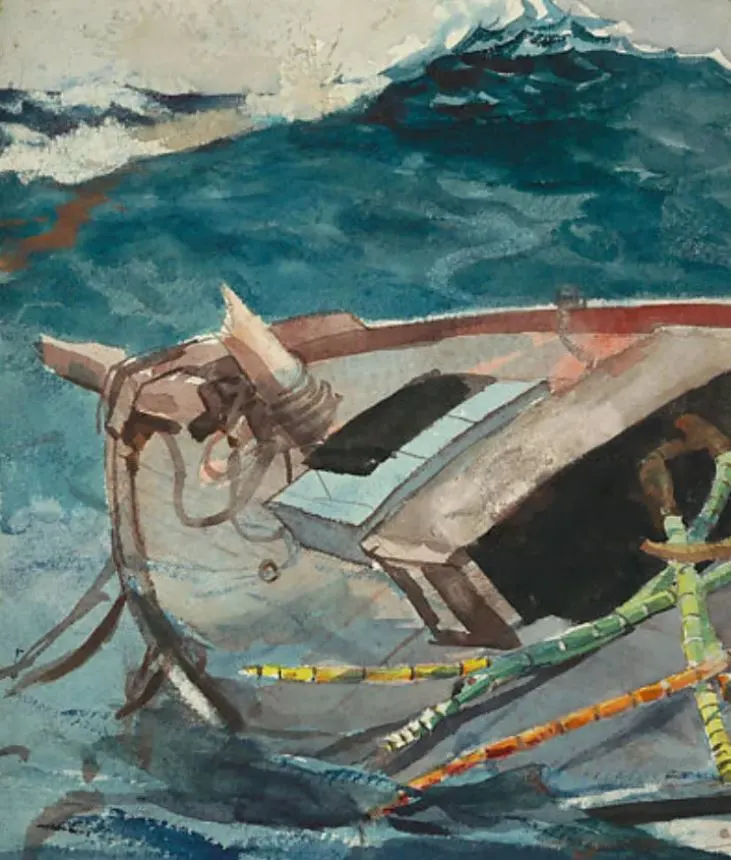
4. He already used the shark’s composition in a mid-1880s watercolor
When is mentioned that the daily lives of people in the Caribbean were one of Homer’s greatest fascinations, I didn’t exaggerate.
The moment he embarked on his first journey to this tropical region in 1885, he started producing artworks depicting people at sea.
I also said that The Gulf Stream combines several earlier studies into a single work of art and this is highlighted by the fact that he already painted a very similar shark well over a decade earlier.
His watercolor titled “Shark Fishing” (1885) features a very similar composition of a shark as the main fish appearing in The Gulf Stream.
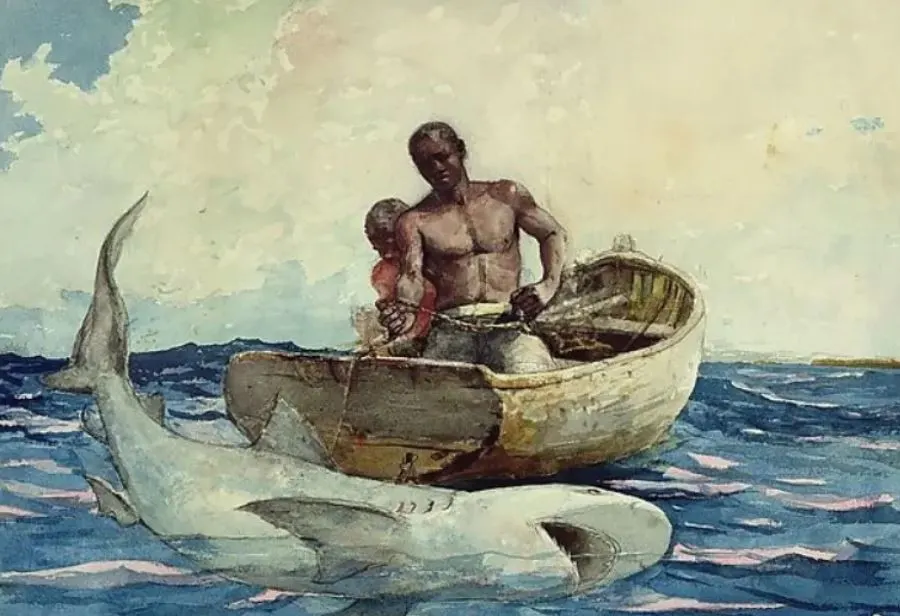
5. Homer likely drew inspiration from several other famous paintings
Winslow Homer certainly read stories about sharks attacking and even eating people in the Caribbean. Whether or not he saw such an attack on his countless voyages remains a mystery.
What’s more likely is that he drew inspiration from several other world-famous masterpieces which he was acquainted with.
Below is a list of 3 paintings that might have served as a source of inspiration for The Gulf Stream by Winslow Homer.
Watson and the Shark (1778) – John Singleton Copley
Copley’s incredible depiction of the rescue of a young boy named Brook Watson from a shark attack likely served as a source of inspiration for Homer.
This attack happened just outside of Havana, Cuba, in 1749. The version completed in 1778 is on display at the National Gallery of Art in Washington D.C.

The Barque of Dante (1822) – Eugène Delacroix
The Barque of Dante was the first major painting by Eugène Delacroix, the French painter who dominated the Romantic school in the first half of the 19th century.
The damned souls floating around Dante’s boat resemble the bloodthirsty sharks encircling the man’s demasted boat in Homer’s painting.
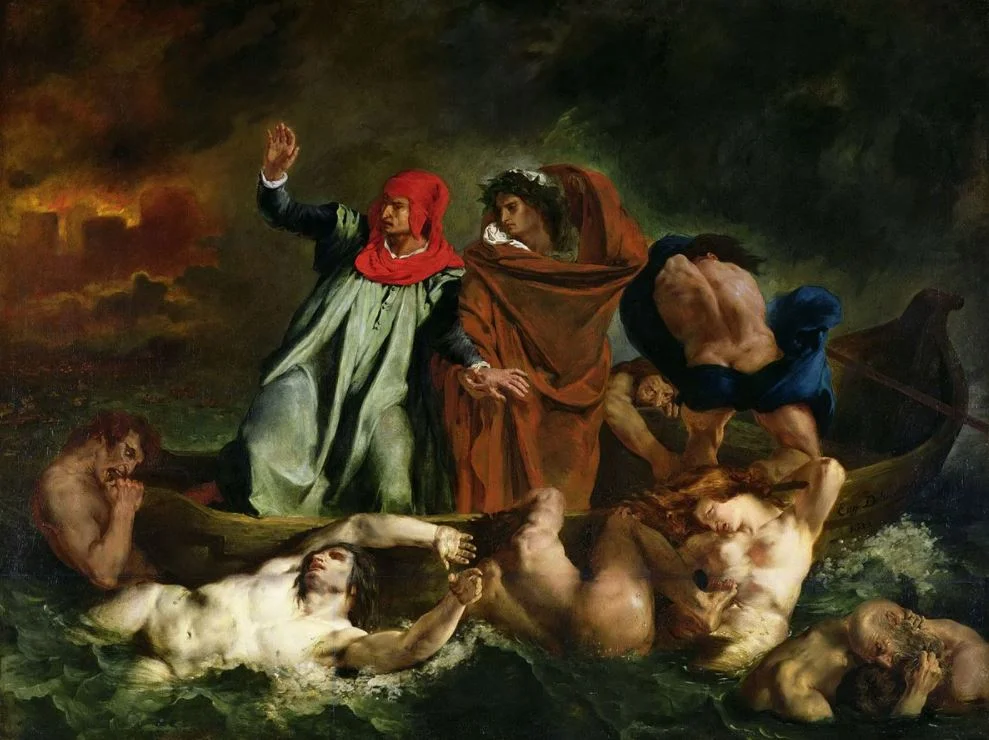
The Slave Ship (1840) – J.M.W. Turner
The Slave Ship is another world-famous Romantic painting that may have inspired Winslow Homer in the late 19th century.
The wild sea, helpless slaves who are tossed into the water, and the gloomy ship resemble the atmosphere in Homer’s iconic work.

6. The painter assured that the outcome of this magnificent work was positive
The gloomy atmosphere of The Fog Warning (1885) is most certainly very similar to that we can admire in The Gulf Stream (1899).
It’s a far cry from the optimism that captivates viewers when looking at Homer’s Breezing Up (A Fair Wind) (1873-1876), a painting completed in the aftermath of the American Civil War.
So does this mean that the Gulf Stream is a work overflowing with pessimism?
On the contrary! Winslow Homer once remarked this to a puzzled viewer following an exhibition;
I regret very much that I have painted a picture that requires any description….I have crossed the Gulf Stream ten times & I should know something about it. The boat & sharks are outside matters of very little consequence. They have been blown out to sea by a hurricane. You can tell these ladies that the unfortunate man who now is so dazed & parboiled, will be rescued & returned to his friends and home, & ever after live happily.
To ensure that the narrative of the painting wouldn’t be mistaken, Homer painted a watercolor that depicts exactly what happened to the man in the small boat.
As you can see, he was washed ashore following the storm and most likely made it back home safely.
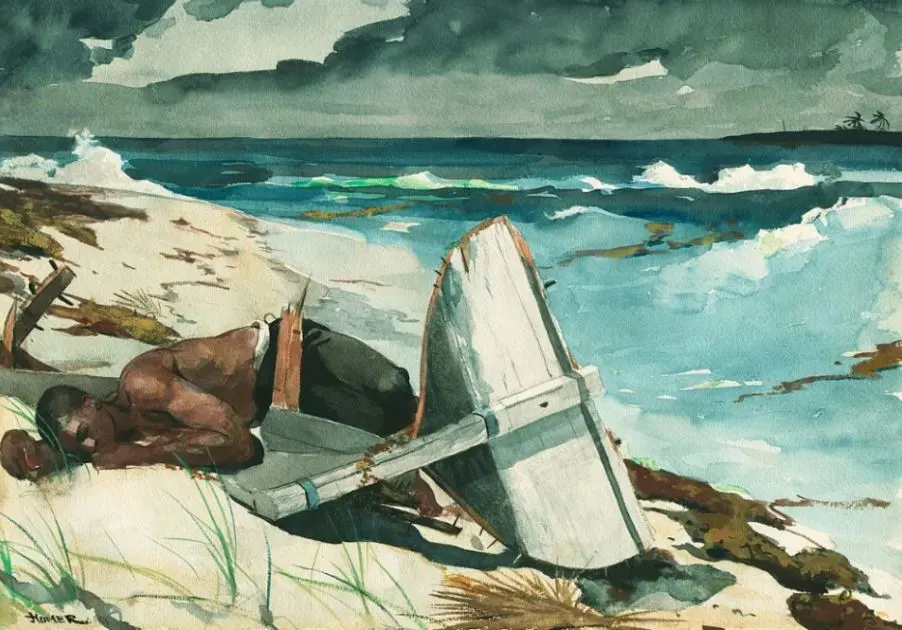
7. How big is The Gulf Stream by Winslow Homer?
The artist included a large number of elements into a single work of art and reworked the original composition several times.
He made several changes to the small boat and also completely repainted the wild ocean to make it look as realistic as possible.
It’s slightly larger than some of his other famous paintings as The Gulf Stream by Winslow Homer has dimensions of 71.4 × 124.8 cm (28.1 x 49.1 inches).
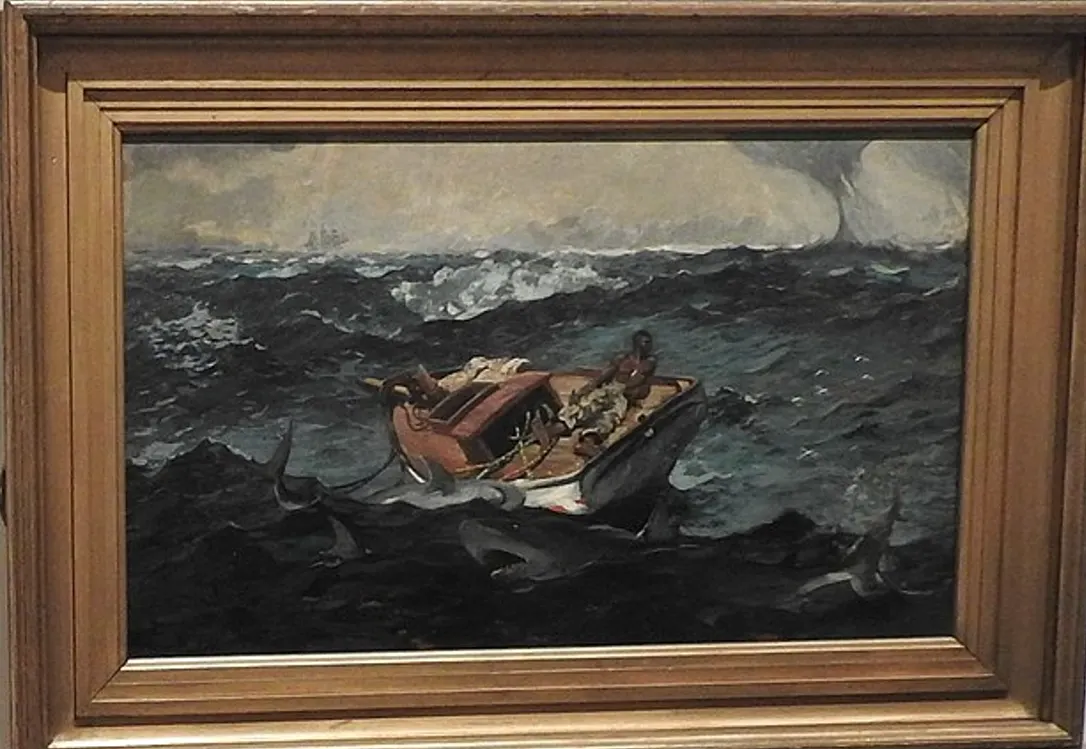
8. Where can Homer’s masterpiece be admired today?
Although he is considered to be one of the most renowned American painters in history, he didn’t manage to sell many of his paintings instantly.
It was first exhibited at the Pennsylvania Academy of the Fine Arts in Philadelphia in 1900 and received a lukewarm response.
This was likely the main reason why he reworked several elements, including a complete makeover of the ocean.
It was exhibited once again at the National Academy of Design in New York City in 1906 and by then, the audience had already warmed up to the work.
Shortly after, at the request of the Academy’s members, it was acquired by the Metropolitan Museum of Art in NYC.
Today, you can admire this painting at the MET as it’s on view at Fifth Avenue in Gallery 767 in this amazing museum in New York City.
